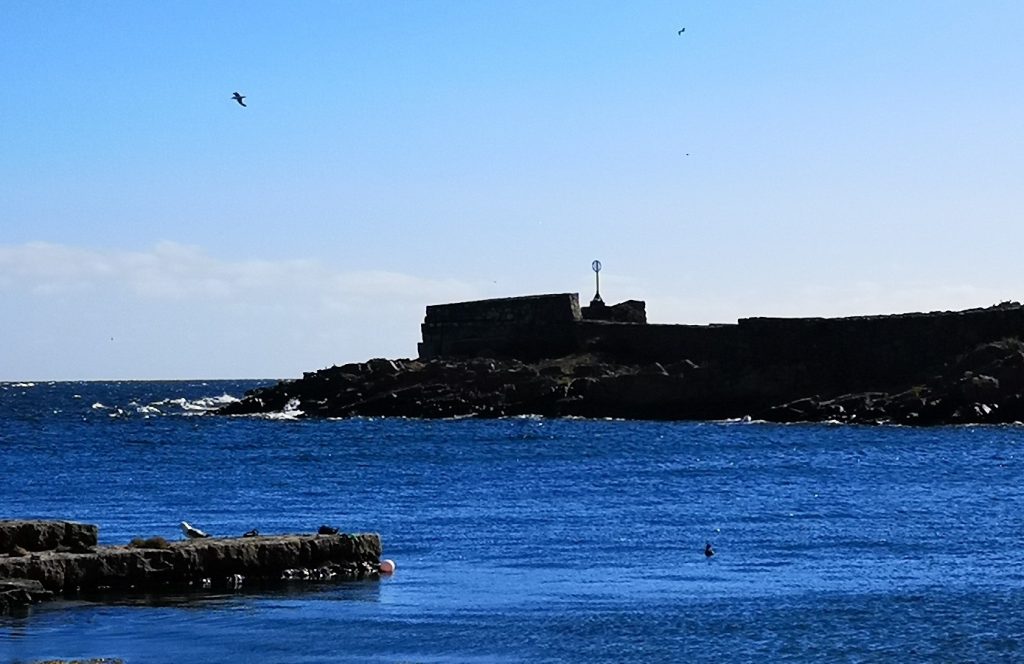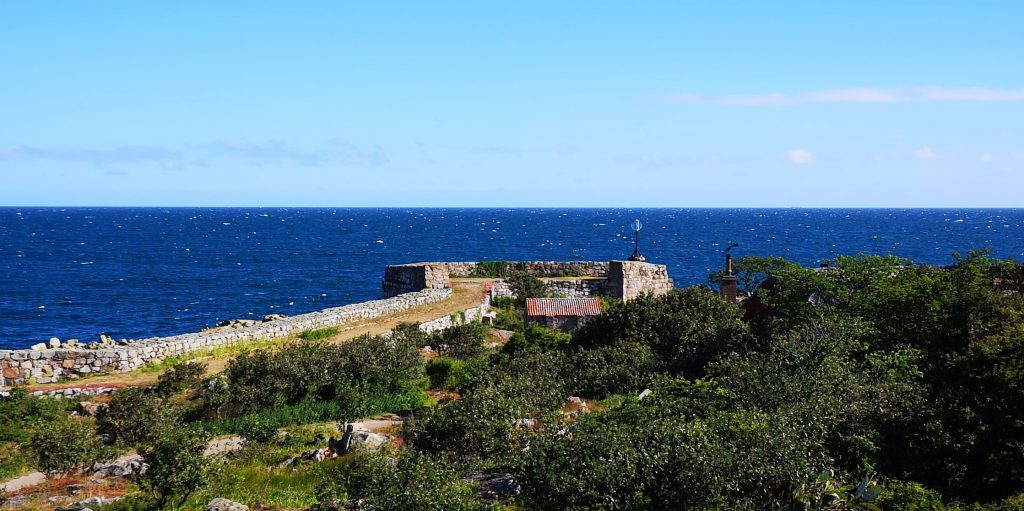In summer 1684, the first pounding of hammers could be heard at Ertholmene. Construction of the fortress had begun. The Naval Fortress Christiansø was established in response to a naval build-up in the southern Baltic Sea. Denmark’s security was seriously threatened, as our arch-enemy Sweden was becoming a major power, and Denmark with the stroke of a pen had lost Skåne, Halland, Blekinge and Bornholm in 1658, leaving the country with no ports east of Køge. However, a successful uprising on Bornholm against the Swedish rule soon returned Bornholm and Ertholmene to Denmark.

At the same time, the Swedes were establishing the huge naval base of Karlskrona in the former Danish territory of Blekinge. From Karlskrona, the Swedish fleet could launch earlier in the year and stay at sea for longer periods, because this naval base, with its southern location, remained free of ice for longer than the northern naval port in Stockholm, where the Swedish navy had hitherto been based. Danish maritime supremacy in the southern region of the Baltic Sea was thus threatened, and in response, King Christian V and the Danish state administration turned their attention to Ertholmene and the archipelago’s natural harbour. The raw skerries were conquered, and a fortress was established on Christiansø – possibly one of the first naval outposts in the world.
288 Norwegians were sent to the rocky island, under the leadership of Anthony Coucheron, a Dutch fortress engineer with experience from building fortresses in rocky terrain in Norway. Granite for the towers and fortifications was quarried on site. All other building materials had to be brought in by ship across the sea, and from Bornholm it was possible to watch as the contours of Ertholmene changed.
Anthony Coucheron, who had built several large fortresses in Norway, was especially known for his fortress towers, of which Store Tårn and Lille Tårn are among the largest. Coucheron got the idea for these rather distinctive towers (which would later be called Martello towers) from the Mediterranean where this type of tower was a common sight.
The early years were a constant struggle against nature – and against each other, with mutiny brewing on several occasions.
Gyldenløves Batteri
The gun battery, Gyldenløves Batteri, was completed in summer 1684 and was the fortress’ first structure. The battery is one of four detached gun batteries (the others being Juels Batteri, Spanns Batteri and Sehesteds Batteri), which were built to defend the harbour entrance from an invading fleet. One of the weakness of the Christiansø fortress was that the enemy could avoid the island’s many cannons and fortification towers simply by sailing straight through the harbour entrance, right into the heart of the fortress. Consequently, the harbour was blocked during times of war by cables and chains. Below Gyldenløves Batteri, you can see a hole in the wall through which the harbour blockades were attached.
You can clearly see that Gyldenløves Batteri has been reinforced and extended several times over the centuries by the different layers of stone that make up the fortification.
Jomfrugalgen

The terrain in front of the large wall between Bielkes Port and Hofmanns Port is called Jomfrugalgen – literally ‘The Lady’s Gallows’. When the big wall was built in the early 1800s, the rock formations where the wall now stands were blasted away. Before being broken up, there was a deep ravine here, and you can still see the outline of it today. The name ‘The Lady’s Gallows’ dates back to before 1684 when the fortress was built. In the deep ravine, the story goes, a gallows had been found, from which a woman’s body hung. She was believed to have been hanged by pirates.


